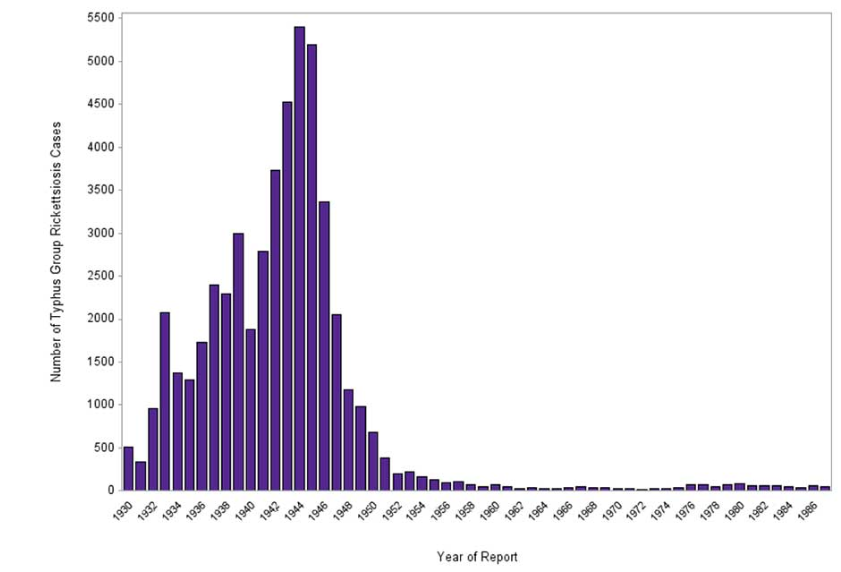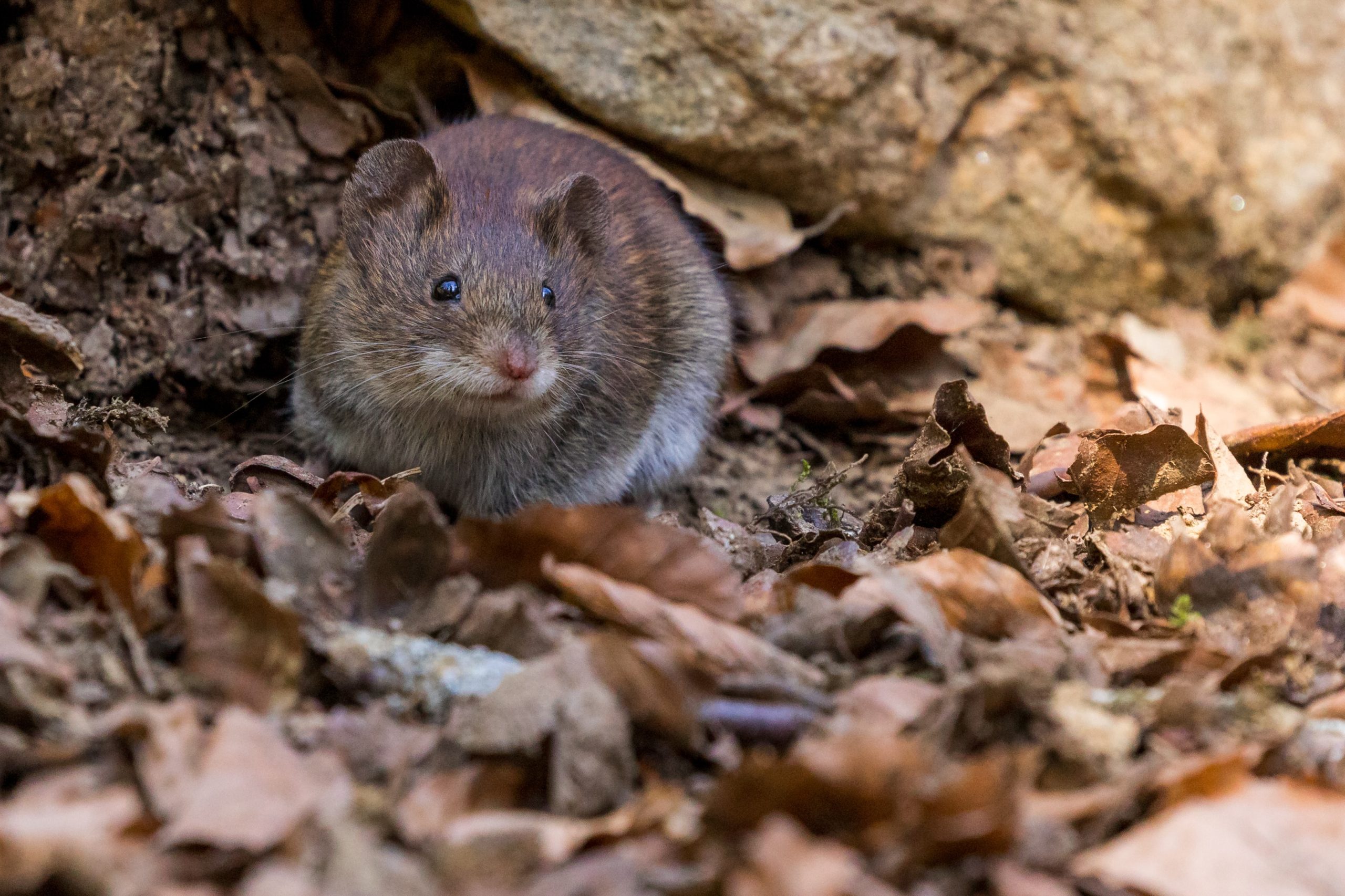Individuals eager to see funding for better treatments for tick-borne disease can be frustrated to see research dollars going toward studies counting mice. Why do public health research funds go to studying wild mice?
Mice and other mammals are a crucial part of disease transmission that involves fleas and ticks. A common misconception is that the pathogens ticks transmit to humans are a part of their normal microbiome as soon as they hatch. However, Lyme Borrelia, like Borrelia burgdorferi or Borrelia mayonii, have been well documented in the white-footed mouse (Peromyscus leucopus) and other rodents across the United States. These small mammals are typically unaffected by Borrelia species and act as reservoirs, allowing ticks to acquire the bacteria upon feeding. Therefore, Borrelia transmission is greatly reduced if reservoirs or competent vectors are missing from the environment.
Similarly, cats act as reservoirs for Bartonella henselae, but transmission to humans or dogs is unlikely unless fleas are involved. Fleas are sometimes seen as secondary in importance to ticks, but as vectors of serious pathogens such as Y. pestis (the plague) and Rickettsia typhi (flea-borne typhus), fleas have changed human history.
Diseases indirectly transmitted by rodents per the CDC include:
- Babesiosis
- Colorado Tick Fever
- Cutaneous Leishmaniasis
- Human Granulocytic Anaplasmosis
- La Crosse Encephalitis
- Lyme disease
- Murine Typhus
- Omsk Hemorrhagic Fever
- Powassan Virus
- Scrub Typhus
- Rickettsialpox
- Relapsing Fever
- Rocky Mountain Spotted Fever
- Sylvatic Typhus
- West Nile Virus
Human disease could be reduced if public health measures can be implemented that control the interaction of mice and other rodents with humans and their shared environment. One Health is a concept that focuses on how animal health, human health and the environment interact. One Health research can identify where humans and mice interact to share disease vectors (like ticks and fleas) and their pathogens.
Control of exposure to mice in homes has already made a dramatic change in human health. Flea-borne typhus was common in the United States until the 1950s, but from 1945 to 1955 cases dropped from over 2,000 per year to fewer than 100 cases reported per year.

Meanwhile, tick-borne disease prevalence is increasing and it is possible that tick exposure is increasing as well. In a previous post, we discussed how increasingly common mild weather in the winters allows for year-round exposure. There isn’t a lot of information about ticks from 100 or more years ago, but Tom Sawyer tried to trade his tooth for a tick. This suggests they may have been less commonly seen in author Mark Twain’s day than they are now.
Changes to the environment may be part of why we are seeing more tick-borne disease – and possibly more ticks – than in the past. Forest fragmentation due to suburban development increases the opportunities for mice to prosper and at the same time brings mice and people into closer contact. In a retrospective study of communities in Pennsylvania, researchers found that Lyme disease incidence was higher in residential areas where the “greenness” score was higher.
Research evidence suggests that dramatic reductions in human exposure to tick-borne diseases including Lyme disease may be possible through better control of free-roaming wild mice. Research successes have included:
- Feeding Lyme disease vaccine to mice for two years in an area of Connecticut reduced the number of ticks carrying Lyme disease in the area from 40% to 9%.
- Using bait boxes to lure mice into a trap where they are treated with a topical insecticide reduced ticks by 97% after a 9-week treatment.
Other experiments have documented specific habitat patterns that are most likely to be associated with human infections. There is even a controversial plan to release anti-tick gene-edited mice onto an island as an experiment. Without going that far, experiments have demonstrated that the network that links wild mice, fleas and ticks, and their pathogens with humans can be disrupted.
It’s been done before with household mice infestations and typhus. It’s been done before with mosquitoes and malaria, which used to be endemic in the United States. It’s being done with guinea worms in Africa. There are examples of battles against zoonotic diseases that have had significant prevention wins. Someday more tick- and flea-borne diseases associated with mice and other rodents could be among them.
References
Centers for Disease Control and Prevention. (2019). Typhus fevers: Historical trends. Available at https://www.cdc.gov/typhus/murine/history.html
Centers for Disease Control and Prevention. (2019). Rodents: Indirectly transmitted by rodents. Available at https://www.cdc.gov/rodents/diseases/indirect.html
Eldred, S. M. (2017, July 5). Lyme disease is spreading, and it’s partly this mouse’s fault. FiveThirtyEight.com. Available at https://fivethirtyeight.com/features/lyme-disease-is-spreading-and-its-partly-this-mouses-fault/
Chen, A. (2020, January 10). Mouse meals laced with a vaccine might be key to slowing Lyme disease. WBUR.org. Available at https://www.wbur.org/commonhealth/2020/01/10/mice-lyme-disease-vaccine-connecticut
Ferris, R. (2017, March 27). Building a better mouse trap may be the secret to killing disease-carrying ticks. CNBC.com. Available at https://www.cnbc.com/2017/03/27/scientists-try-to-build-a-better-mouse-trap-in-quest-to-kill-ticks.html
Buchthal, J. et al. (2019). Mice against ticks: An experimental community-guided effort to prevent tick-borne disease by altering the shared environment [open access]. Philosophical Transactions of the Royal Society B. doi:10.1098/rstb.2018.0105 https://royalsocietypublishing.org/doi/10.1098/rstb.2018.0105
Roberts, L. (2019). Exclusive: Battle to wipe out debilitating Guinea worm parasite hits 10 year delay. Nature, 574, 157-158. Available at https://www.nature.com/articles/d41586-019-02921-w
Halsey, S. J. et al. (2018). The role of Ixodes scapularis, Borrelia burgdorferi and wildlife hosts in Lyme disease prevalence: A quantitative review. Ticks and Tick-Borne Diseases, 9(5), 1103-1114. doi:10.1016/j.ttbdis.2018.04.005 https://www.ncbi.nlm.nih.gov/pubmed/29680260
Moon, K. A. et al. (2019). Peridomestic and community-wide landscape risk factors for Lyme disease across a range of community contexts in Pennsylvania. Environmental Research, 178, 108649. doi:10.1016/j.envres.2019.108649 https://www.ncbi.nlm.nih.gov/pubmed/31465993


